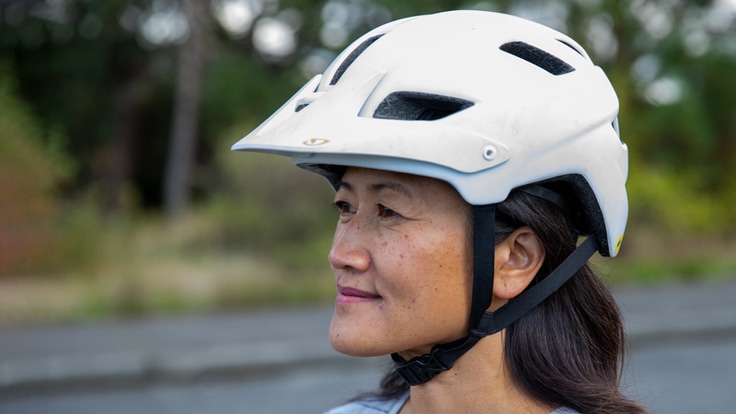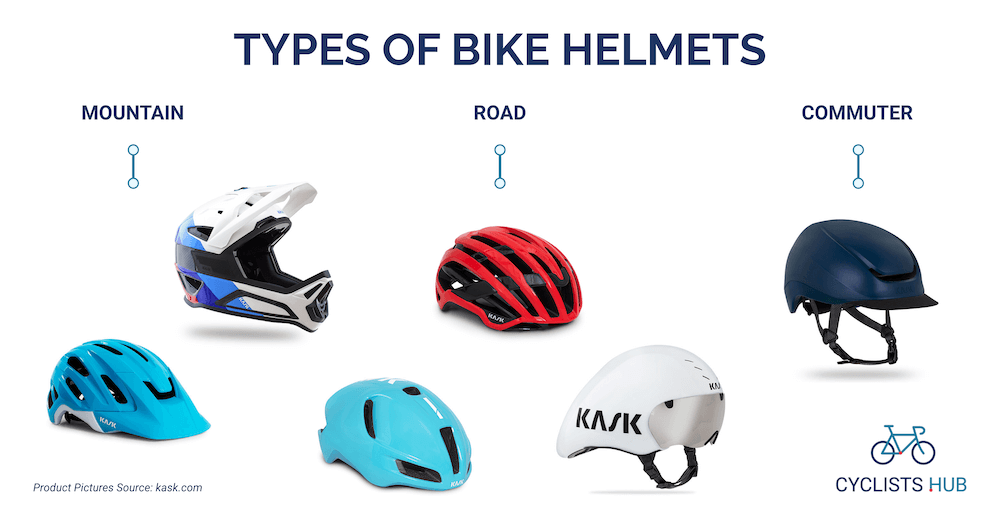To buy a bicycle helmet, ensure it meets safety standards and fits your head properly. Check for comfort and ventilation features.
Choosing the right bicycle helmet is crucial for your safety. Start by verifying the helmet meets recognized safety standards like CPSC, ASTM, or Snell. A proper fit is essential; the helmet should sit level on your head and not move when you shake it.
Look for adjustable straps and a retention system to ensure a snug fit. Comfort is also key, so consider helmets with adequate padding and good ventilation. Test various models to find one that feels secure and comfortable. Investing in a quality helmet can make your rides safer and more enjoyable.
Importance Of A Good Helmet
A good bicycle helmet is essential for every rider. It protects your head from injuries. Wearing a helmet can save your life. Let’s explore why a good helmet is important.
Safety Benefits
Bicycle helmets offer several safety benefits. They reduce the risk of head injuries. A good helmet absorbs shock during a fall. It protects the brain from impact. Helmets also shield your head from debris and weather elements.
Legal Requirements
Many places have laws about wearing bicycle helmets. These laws aim to protect cyclists. Check your local laws before buying a helmet. Following the law can prevent fines and ensure your safety.
| Country | Helmet Requirement |
|---|---|
| USA | Varies by state |
| Canada | Required for all ages |
| Australia | Mandatory for all riders |
Always choose a helmet that meets safety standards. Look for certification labels like CPSC or ASTM. A certified helmet ensures reliable protection.
- Check the fit of the helmet.
- Adjust the straps properly.
- Replace the helmet after an impact.
Buying a good helmet is a wise investment. It ensures your safety and compliance with the law. Stay safe and enjoy your ride!

Credit: en.wikipedia.org
Types Of Bicycle Helmets
Choosing the right bicycle helmet is essential for safety and comfort. There are several types of bicycle helmets, each designed for different riding styles. This guide will help you understand the various types of bicycle helmets available.
Road Bike Helmets
Road bike helmets are designed for speed and efficiency. They are lightweight and have plenty of ventilation. These helmets often have an aerodynamic shape to reduce wind resistance. Key features of road bike helmets include:
- Lightweight construction
- Good ventilation with multiple vents
- Aerodynamic design
- Minimalistic padding for comfort
Mountain Bike Helmets
Mountain bike helmets offer more coverage and protection. They are built to withstand tough terrains and impacts. These helmets usually have a visor to shield your eyes from the sun and debris. Important features of mountain bike helmets include:
- Extended rear coverage
- Visor for sun and debris protection
- Robust construction for impact resistance
- Ample ventilation for cooling
Commuter Helmets
Commuter helmets are ideal for daily rides in the city. They focus on comfort and visibility. Many commuter helmets come with built-in lights or reflective elements. Key features of commuter helmets include:
- Comfortable fit for daily use
- Built-in lights or reflective elements
- Good ventilation for short rides
- Simple and stylish design
Here is a comparison table to help you choose the right helmet:
| Helmet Type | Key Features | Best For |
|---|---|---|
| Road Bike Helmets | Lightweight, Aerodynamic, Good Ventilation | Speed and Efficiency |
| Mountain Bike Helmets | Extended Coverage, Visor, Impact Resistant | Tough Terrains |
| Commuter Helmets | Comfortable, Built-in Lights, Stylish | Daily City Rides |
Key Features To Look For
Buying a bicycle helmet is crucial for safety. Knowing the key features ensures you pick the right one. Here are the important aspects you need to check.
Fit And Comfort
A helmet must fit well to protect you. Measure your head size and select the right helmet size. Check for adjustable straps and interior padding. These help in achieving a snug fit. A comfortable helmet encourages regular use.
Ventilation
Good ventilation keeps your head cool during rides. Look for helmets with multiple vents. These allow air to flow freely. Ventilation helps reduce sweat and keeps you comfortable.
Weight
Lightweight helmets are easier to wear. They reduce strain on your neck and shoulders. A heavy helmet can be uncomfortable during long rides. Check the helmet weight before buying.
Visibility
Visibility is crucial for safety, especially at night. Look for helmets with reflective elements. Some helmets come with built-in lights. This makes you more visible to others on the road.
Safety Standards And Certifications
Choosing a bicycle helmet is crucial for safety. Understanding safety standards and certifications helps ensure the best protection. This section explains key certifications.
Cpsc Certification
The Consumer Product Safety Commission (CPSC) sets standards for helmets in the USA. A CPSC-certified helmet meets rigorous safety tests. It ensures protection from impacts.
- Impact Testing: Helmets undergo tests to measure impact absorption.
- Retention System: Straps and buckles are tested for strength.
- Coverage: The helmet must cover the head adequately.
Look for the CPSC sticker inside the helmet. This guarantees it meets US safety standards.
Other International Standards
Different countries have their own safety standards. Here are some important ones:
| Standard | Region | Details |
|---|---|---|
| EN 1078 | Europe | Covers bicycle, skateboard, and roller skate helmets. |
| AS/NZS 2063 | Australia/New Zealand | Includes strict impact and retention tests. |
| CSA CAN-CSA-D113.2-M | Canada | Enforces high safety standards for helmets. |
Always check for these certifications. They ensure the helmet meets regional safety requirements. Investing in a certified helmet can save lives.
How To Measure Your Head
Buying a bicycle helmet starts with measuring your head. This ensures a perfect fit and maximum safety. A well-fitted helmet provides better protection. Here’s a step-by-step guide on how to measure your head accurately.
Using A Measuring Tape
First, get a flexible measuring tape. It’s best to use a cloth tape. Stand in front of a mirror.
- Wrap the tape around your head.
- Place it about one inch above your eyebrows.
- Ensure the tape is level and not too tight.
- Read the measurement in centimeters or inches.
If you don’t have a measuring tape, use a string. Wrap it around your head, then measure the string with a ruler.
Finding The Right Size
Now that you have your head measurement, use it to find the right helmet size. Most helmets have size labels like small, medium, and large. Here’s a general guide:
| Helmet Size | Head Measurement (cm) |
|---|---|
| Small | 51-55 |
| Medium | 55-59 |
| Large | 59-63 |
Choose the size that matches your measurement. If you’re between sizes, try both. The helmet should fit snugly but comfortably.
Remember, a properly fitted helmet is essential for safety. Always measure your head before buying a new helmet.
Adjusting Your Helmet
Adjusting your bicycle helmet ensures maximum safety and comfort. A properly adjusted helmet can protect your head during falls or accidents. Below are essential steps to adjust your helmet correctly.
Strap Adjustment
Strap adjustment is crucial for a secure fit. Follow these steps:
- Buckle the chin strap. Ensure it sits snugly under your chin.
- Adjust the side straps to form a V-shape around your ears.
- Tighten the chin strap. You should fit one finger between the strap and your chin.
Padding And Fit
Proper padding and fit ensure comfort and safety. Here’s how to achieve it:
- Check the padding inside the helmet. It should feel comfortable.
- Adjust the padding if needed. Most helmets come with removable pads.
- Ensure the helmet sits level on your head. It should cover your forehead.
Remember, a well-adjusted helmet can save lives. Always double-check the fit before every ride.
Materials And Construction
Choosing the right bicycle helmet involves understanding its materials and construction. These elements play a crucial role in the helmet’s effectiveness and comfort. Let’s dive into the key components.
Eps Foam
The core of most bicycle helmets is made from Expanded Polystyrene (EPS) foam. This foam is designed to absorb impact energy during a crash. EPS foam is lightweight and provides excellent protection. It compresses on impact to cushion your head. This material is a standard choice due to its high efficiency.
Here are some features of EPS foam:
- Lightweight
- High impact absorption
- Durable
- Affordable
Shell Materials
The outer shell of a helmet is usually made from hard plastics. These materials protect the EPS foam from wear and tear.
Common shell materials include:
| Material | Features |
|---|---|
| Polycarbonate | Lightweight, strong, and crack-resistant |
| ABS Plastic | Affordable, durable, but slightly heavier |
The shell material also adds to the helmet’s style and aerodynamics. A well-constructed shell can improve airflow and reduce drag.
When choosing a helmet, consider these materials and their benefits. A good helmet balances protection, comfort, and weight. This ensures a safer and more enjoyable ride.

Credit: www.rei.com
Additional Features
Choosing a bicycle helmet is about more than just safety. Additional features can enhance your riding experience. Here, we explore some important features to consider.
Mips Technology
MIPS Technology stands for Multi-directional Impact Protection System. It adds an extra layer of protection. This technology helps reduce rotational forces during impacts. Many high-quality helmets now include MIPS. It provides better safety for your head.
Integrated Lights
Integrated lights increase visibility during night rides. These lights are built into the helmet. They can make you more visible to cars and other riders. Some helmets have lights on both the front and back. This feature is essential for evening and early morning riders.
Visors
Visors protect your eyes from the sun and debris. They are especially useful for mountain biking. Many helmets come with removable visors. This feature allows you to adjust your helmet to different riding conditions.
| Feature | Benefit |
|---|---|
| MIPS Technology | Extra protection against rotational impacts |
| Integrated Lights | Increased visibility during night rides |
| Visors | Protection from sun and debris |
These additional features can make your ride safer and more enjoyable. Consider these elements when choosing your next bicycle helmet.
Price Vs. Quality
Choosing the right bicycle helmet can be challenging. The balance between price and quality plays a crucial role. Here’s a guide to help you make an informed decision.
Budget Options
Many budget-friendly helmets offer good protection. They are an excellent choice for beginners or casual riders.
| Feature | Description |
|---|---|
| Price Range | $20 – $50 |
| Material | Basic foam and plastic |
| Comfort | Standard padding |
| Safety | Meets basic safety standards |
Budget helmets are often made with basic materials. They meet standard safety regulations and provide adequate protection.
- Affordable for most people
- Available in various styles
- Lightweight and simple
High-end Models
High-end helmets offer advanced features. They provide enhanced safety and comfort.
| Feature | Description |
|---|---|
| Price Range | $100 – $300+ |
| Material | High-quality foam, carbon fiber |
| Comfort | Advanced padding and ventilation |
| Safety | Exceeds standard safety regulations |
These helmets use premium materials like carbon fiber. They often come with enhanced padding and better ventilation. This provides more comfort during long rides.
- Superior protection
- Enhanced comfort
- Stylish designs
Investing in a high-end helmet can be worthwhile for serious cyclists. These helmets offer better safety features and comfort.
Top Brands And Recommendations
Choosing the right bicycle helmet is crucial for safety and comfort. With many brands available, knowing the top brands and recommendations helps. This section explores popular brands and the best models for different needs.
Popular Brands
Several brands stand out in the bicycle helmet market. These brands are known for quality, safety, and comfort.
- Giro: Giro offers a wide range of helmets for all riders.
- Bell: Bell is known for innovative designs and safety features.
- Specialized: Specialized focuses on high-performance and stylish helmets.
- POC: POC helmets are famous for their advanced safety technology.
- Bontrager: Bontrager combines comfort with excellent protection.
Best Models For Different Needs
Different riders have different needs. Here are some of the best models for various riding styles.
| Need | Brand | Model |
|---|---|---|
| Road Cycling | Giro | Aether MIPS |
| Mountain Biking | Bell | Super 3R MIPS |
| Commuting | Specialized | Echelon II |
| Kids | POC | Pocito Omne SPIN |
| Triathlon | Bontrager | Ballista MIPS |
Choosing the right helmet ensures better safety. Consider your riding style and needs. Pick a helmet from these top brands for the best experience.

Credit: www.cyclistshub.com
Frequently Asked Questions
What Size Bicycle Helmet Do I Need?
To determine your helmet size, measure your head circumference. Use a flexible tape measure, and wrap it around your head just above your eyebrows. Compare the measurement to the helmet sizing chart provided by the manufacturer.
How Should A Bicycle Helmet Fit?
A proper-fitting helmet should sit level on your head. It should cover your forehead and not tilt back. The straps should form a “V” under your ears and be snug but comfortable.
What Safety Standards Should A Helmet Meet?
Look for helmets that meet safety standards such as CPSC, ASTM, or Snell. These certifications ensure the helmet has passed rigorous safety tests and offers adequate protection.
Can I Use A Used Bicycle Helmet?
It’s not recommended to use a second-hand helmet. Helmets can have hidden damage or wear that compromises safety. Always buy a new helmet to ensure maximum protection.
Conclusion
Choosing the right bicycle helmet ensures safety and comfort. Focus on fit, materials, and certification standards. Always try on helmets before purchasing. Prioritize your safety by investing in a high-quality helmet. Remember, a good helmet can make a significant difference in protecting your head.
Happy riding!
